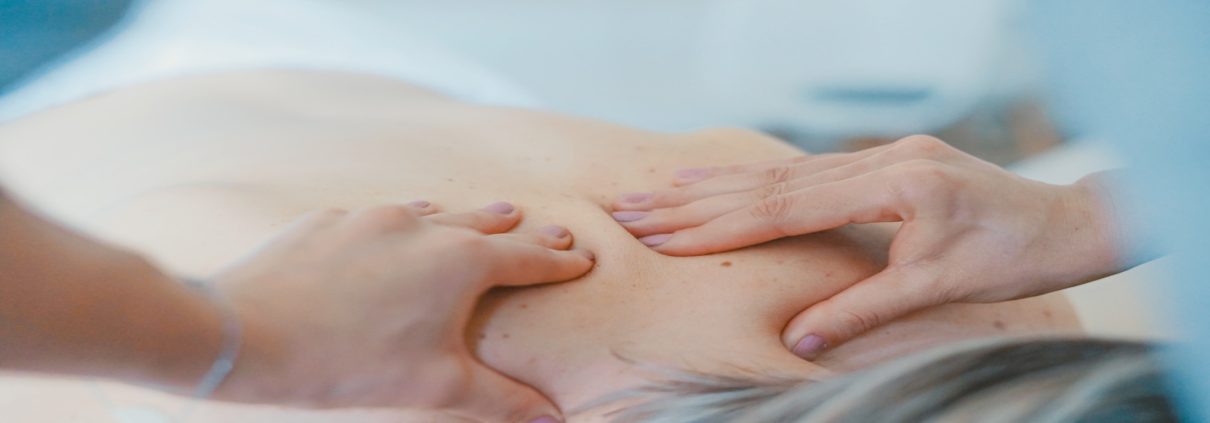Children’s Health and Regular Exercise
|Posted by Natania GoldbergGetting your children hooked on exercise is a gift that will last a lifetime. Their active upbringing largely determines their ongoing wellbeing through adulthood. We should encourage them to participate in healthy activities and practice different exercises on a daily basis.
Allow your child to choose activities that appeal to them and which are age appropriate. They don’t need to log 30-60 minutes in the gym (unless that’s really what they want to do). The trick to getting kids interested in exercise at a young age is to keep it fun. Gymnastics classes, sports, dance, hikes in the woods, kayaking, swimming, taking the dog for a walk… all count as “exercise” for kids (and for you!).
Medical research shows that exercise strengthens the immune system of children and makes them less vulnerable to diseases and chronic conditions such as diabetes, allergies, heart problems and orthopedic issues.
Acting as a role model by staying active yourself is one of the best ways to motivate and inspire your kids. If your child sees you embracing exercise as a positive and important part of your lifestyle, they will naturally follow suit.
What are Muscle Knots?
|Posted by Natania GoldbergAnyone who’s ever had shoulder or neck pain is familiar with those knobby lumps you might feel when you rub a sore area, known as “muscle knots.” What exactly are they and does massaging them actually reduce or eliminate them?
Recent research is showing that the myofascial layer has a huge role in chronic muscle pain, including knots. The myofascial layer is the area where the muscle meets the fascia—the very thin, but very strong layer that covers the muscle and keeps it in place. There are a multitude of nerves running through these layers, and it’s the nerves that ultimately cause the pain.
Knots are a chronic ailment and are not caused by sudden trauma or injury to the area. Instead, they are likely a result of muscle overuse or poor posture. Whether you’re regularly active or spend most of your days at a desk, your daily lifestyle is likely contributing to your muscle knots. According to the Mayo Clinic, people who frequently experience stress and anxiety may be more likely to develop trigger points in their muscles. The emotional state of anxiety causes you to routinely clench your muscles, leaving them susceptible to trigger points.
The most common recommendation for chronic muscle soreness is applying deep pressure to the trigger point to release the contraction in the tissue and increase blood flow.
Massaging them can help to break things up or bring some blood flow to the area and perhaps help get it to go away. Getting the correct layer is very important. Trained massage therapists who are skilled at myofascial release are those who have a very good feel for where that myofascial layer is, and know how to release that.
If you suffer from muscle knots, regular massage will not only work out these points of tension, it will help prevent them in the first place.
https://www.mayoclinic.org/diseases-conditions/myofascial-pain-syndrome/symptoms-causes/syc-20375444
Boosting Your Brain Power with Exercise
|Posted by Natania GoldbergStudies continue to show that exercise can boost your intelligence, IQ levels and task efficiency. The brain benefits of regular exercise are for all ages!
Combining exercise with a healthy diet is the best way to protect your brain function. Staying active with a variety of activities is best. Each type of exercise may offer unique benefits for your brain health.
Research conducted at the Salk Institute found that mice who ran 3 miles each night doubled their hippocampus size over time. This is a part of the brain associated with learning and memory.
Most Young People Aren’t Exercising Enough
1 in 4 children get roughly 30 minutes of daily exercise. By the time they’re teens, only 12% get the recommended daily amount of exercise.
Studies show that a lack of exercise not only affects the body, it also affects the brain. For children, the brain benefits of exercise start young. In a study of 6th graders, the fittest students scored 30% higher on tests than average students. Less fit students scored 20% lower than average students.
Workplace Benefits of Physical Activity
Exercise is an invaluable tool to increase your performance and productivity in the workplace as well. On average, an employee who exercises regularly is 15% more efficient.
Exercise is a powerful way to encourage your brain to work at optimum capacity by causing nerve cells to multiply, strengthening their interconnections and protecting them from damage.
A harder workout could mean sharper thinking. The benefits of regular exercise are monumental. It is never too late to start living healthy!
Children’s Health and Regular Exercise
|Posted by Natania GoldbergGetting your children hooked on exercise is a gift that will last a lifetime. Their active upbringing largely determines their ongoing wellbeing through adulthood. We should encourage them to participate in healthy activities and practice different exercises on a daily basis.
Allow your child to choose activities that appeal to them and which are age appropriate. They don’t need to log 30-60 minutes in the gym (unless that’s really what they want to do). The trick to getting kids interested in exercise at a young age is to keep it fun. Gymnastics classes, sports, dance, hikes in the woods, kayaking, swimming, taking the dog for a walk… all count as “exercise” for kids (and for you!).
Medical research shows that exercise strengthens the immune system of children and makes them less vulnerable to diseases and chronic conditions such as diabetes, allergies, heart problems and orthopedic issues.
Acting as a role model by staying active yourself is one of the best ways to motivate and inspire your kids. If your child sees you embracing exercise as a positive and important part of your lifestyle, they will naturally follow suit.
What are Muscle Knots?
|Posted by Natania GoldbergAnyone who’s ever had shoulder or neck pain is familiar with those knobby lumps you might feel when you rub a sore area, known as “muscle knots.” What exactly are they and does massaging them actually reduce or eliminate them?
Recent research is showing that the myofascial layer has a huge role in chronic muscle pain, including knots. The myofascial layer is the area where the muscle meets the fascia—the very thin, but very strong layer that covers the muscle and keeps it in place. There are a multitude of nerves running through these layers, and it’s the nerves that ultimately cause the pain.
Knots are a chronic ailment and are not caused by sudden trauma or injury to the area. Instead, they are likely a result of muscle overuse or poor posture. Whether you’re regularly active or spend most of your days at a desk, your daily lifestyle is likely contributing to your muscle knots. According to the Mayo Clinic, people who frequently experience stress and anxiety may be more likely to develop trigger points in their muscles. The emotional state of anxiety causes you to routinely clench your muscles, leaving them susceptible to trigger points.
The most common recommendation for chronic muscle soreness is applying deep pressure to the trigger point to release the contraction in the tissue and increase blood flow.
Massaging them can help to break things up or bring some blood flow to the area and perhaps help get it to go away. Getting the correct layer is very important. Trained massage therapists who are skilled at myofascial release are those who have a very good feel for where that myofascial layer is, and know how to release that.
If you suffer from muscle knots, regular massage will not only work out these points of tension, it will help prevent them in the first place.
https://www.mayoclinic.org/diseases-conditions/myofascial-pain-syndrome/symptoms-causes/syc-20375444
Boosting Your Brain Power with Exercise
|Posted by Natania GoldbergStudies continue to show that exercise can boost your intelligence, IQ levels and task efficiency. The brain benefits of regular exercise are for all ages!
Combining exercise with a healthy diet is the best way to protect your brain function. Staying active with a variety of activities is best. Each type of exercise may offer unique benefits for your brain health.
Research conducted at the Salk Institute found that mice who ran 3 miles each night doubled their hippocampus size over time. This is a part of the brain associated with learning and memory.
Most Young People Aren’t Exercising Enough
1 in 4 children get roughly 30 minutes of daily exercise. By the time they’re teens, only 12% get the recommended daily amount of exercise.
Studies show that a lack of exercise not only affects the body, it also affects the brain. For children, the brain benefits of exercise start young. In a study of 6th graders, the fittest students scored 30% higher on tests than average students. Less fit students scored 20% lower than average students.
Workplace Benefits of Physical Activity
Exercise is an invaluable tool to increase your performance and productivity in the workplace as well. On average, an employee who exercises regularly is 15% more efficient.
Exercise is a powerful way to encourage your brain to work at optimum capacity by causing nerve cells to multiply, strengthening their interconnections and protecting them from damage.
A harder workout could mean sharper thinking. The benefits of regular exercise are monumental. It is never too late to start living healthy!




Nothing Found
Sorry, no posts matched your criteria